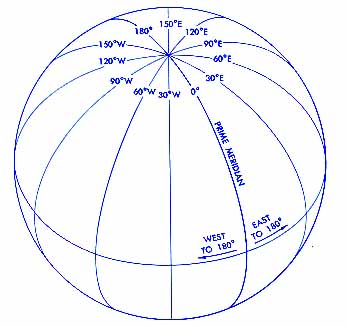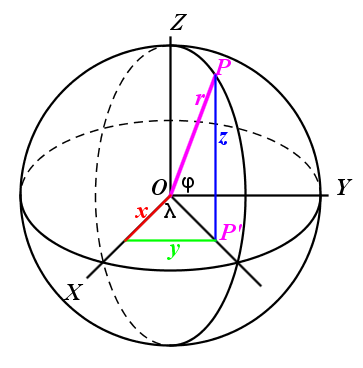Difference Between True and Arbitrary Meridian

A meridian, commonly known as the line of longitude, is the imaginary great circle that passes through true north and true south, joining points of equal longitude. The great circle passing through the North and South Pole is the one that divides the surface of the earth into two equal parts, with the plane passing through the centre of the earth. In simple words, the great circle is a circle traced on the surface of the earth, having a diameter equal to the diameter of the earth. The meridian making an angle of 0 degree with the centre of the earth is known as the prime meridian, and it passes through Greenwich England. Other meridians or lines of longitude are measured in accordance with this prime meridian. The direction given by the angle between the prime central line and a meridian is called bearing. The length of each meridian is equal to half of the great circle, and thus measures 20,003.93 kilometres.
Meridians are broadly divided into two categories, true meridians and arbitrary meridians. The former are established by astronomical observations and are fixed, whereas the latter are defined by human beings for their convenience and can vary with time and location. A true meridian is measured through the prime meridian whereas the arbitrary meridians completely ignore the prime meridian.
A true meridian passes through the centre of the earth, connecting the North Pole and the South Pole. On the other hand, the arbitrary meridians do not necessarily pass through the poles. Furthermore, the former is used to determine relative directions and is suitable for surveying small areas, whereas the latter is used to determine absolute directions and can be used to survey both small and large areas.
Instructions
-
1
True Meridian
True meridian is defined as, “the plane that passes through the true north pole and true south pole at the place of observation”. Here, true north is defined as “the direction from any point along a meridian towards the North Pole of the earth”, and true south is defined as “the direction from any point along a meridian towards the South Pole of the earth”. These are north and south according to the earth’s axis and are also called geographic north and geographic south. The horizontal angle between the true meridian and the centre of the earth is known as true bearing.
Image courtesy: homepages.ius.edu

-
2
Arbitrary Meridian
Arbitrary meridian is defined as “any convenient direction towards a well defined permanent object, place or area”. Arbitrary meridians are used to determine relative directions from the central line in a small area. The horizontal angle between an arbitrary meridian and the line is called arbitrary bearing.
Image courtesy: nosco.ch








